FULL SUN
Dappled shade in summer
pH
Neutral to acidic
PLANTING
Mar-Aug
FEEDING
Organic high Phosphorus feed
Whether hot or sweet, peppers are part of the flavorful foundation for recipes from many different cultures. Growing peppers in the desert garden is a no brainer, almost all cuisine from hot arid regions contain spicy peppers. Because of its widespread usage, there are thousands of varieties of peppers to choose from very gentle or the super fiery. Flavors can range from grassy to citrusy and even smokey. Chilies pair well with just about anything too, vegetables, meats, cheese, and even desserts!
Chilies are natural for the South West and we would be remiss if we did not mention the Chiltepin when growing peppers in the desert. These tiny chilies pack lots of flavor and heat and are perfect to add some heat to South Western cooking.
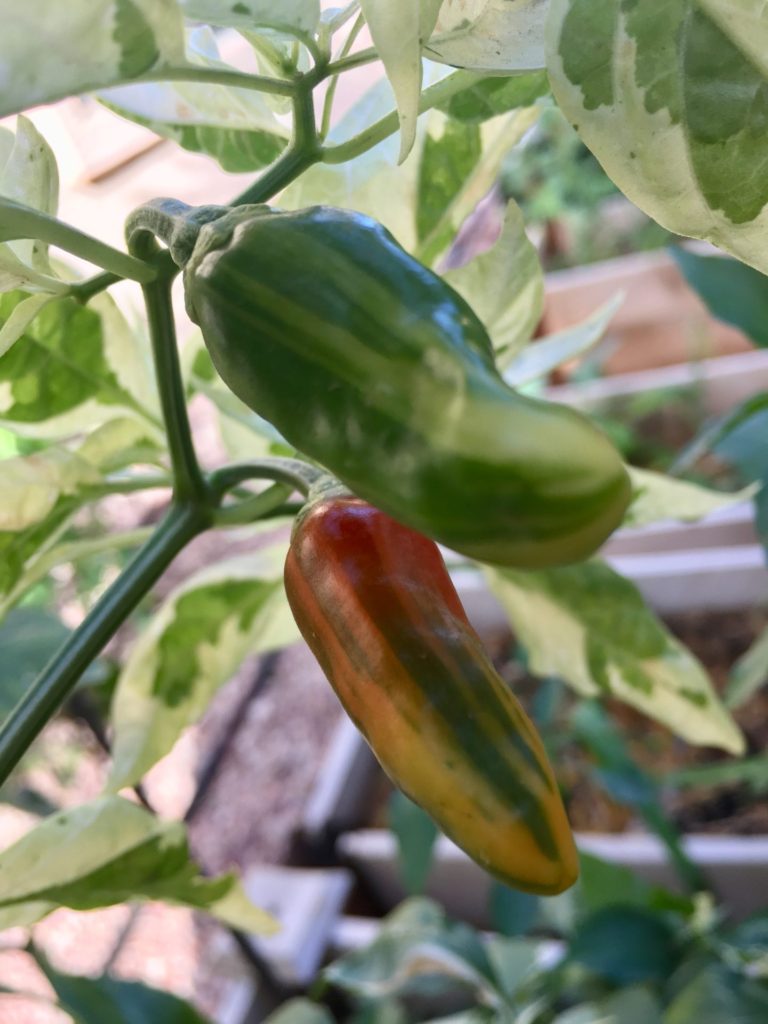
Hot Varieties
Scotch Bonnet: Very popular Brazilian pepper that is used to make jerk seasoning. They make compact plants with habanero level heat. Good dried, or fresh. Makes a very delicious hot sauce.
Bulgarian Carrot Pepper: Dwarf plants that produce brightly colored orange peppers packed with big flavor. There is a definite sweetness before the heat kicks in. Not as hot as scotch bonnet but definitely much hotter than mild. Another variety that is great for hot sauce.
Fish Pepper: A medium to hot pepper perfect for those who want a little heat but not too much. Fish peppers are known for the gorgeous variegated plants which look very ornamental. Even the chilies are beautiful chartreuse and pale yellow strip, until they ripen, changing into a red strip and finally just red. This one holds a lovely history and was used to add a kick to fish stews.
Jalapeno: Probably the best know hot pepper. Versatile everyday use paper that works well in everything. Some varieties can be hotter, such as the jalafuego. Large varieties such as Craigs Grande are perfect for jalapeno poppers.
Bueno Mulata: Gorgeous purple tapered peppers. Medium to hot spiciness level. A good producer with lovely color changing as they ripen. When fully ripe(red) it is the most flavorful and meaty.
Thai Pepper: Lovely bright heat. This one is seriously spicy, but not as spicy as a habanero. Very prolific producer. Great in everyday cooking when more heat is required that a standard jalapeno or even serrano. Also great for drying and powdering.
Hatch Types: Delicious flavorful hatch types make their way into all sorts of dishes and snacks in fall. Heat intensity varies among the different varieties. Check out Heritage Seed Market for 16 different Nu Mex and Hatch varieties with varying levels of heat.
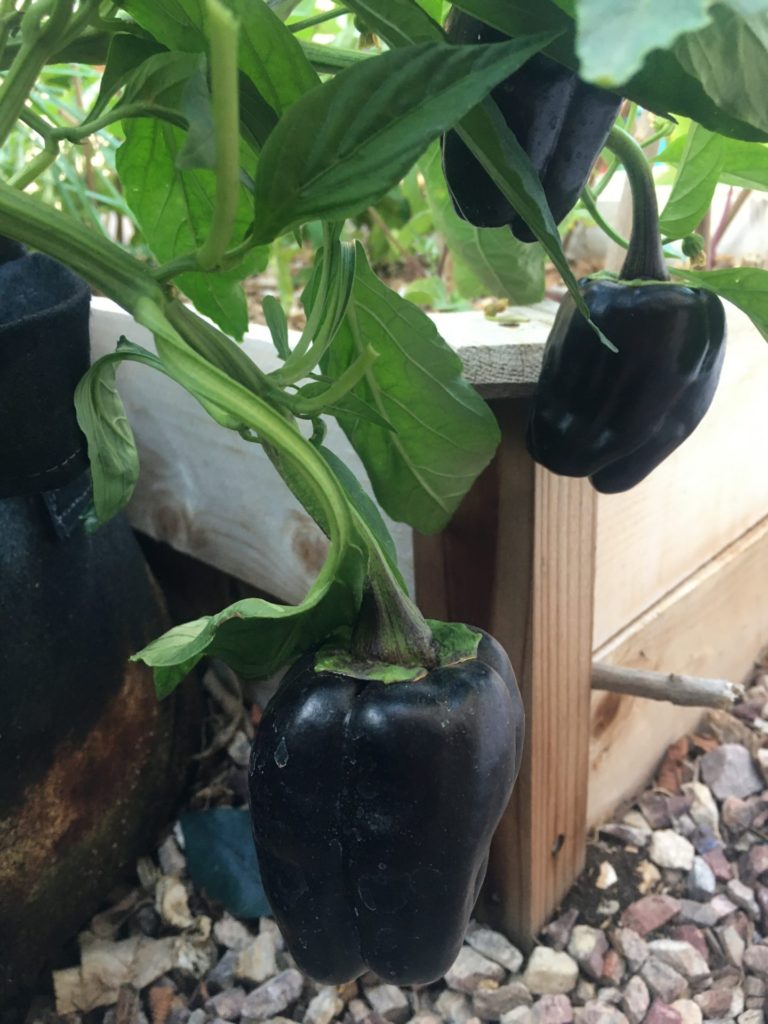
Sweet Varieties
The varieties listed below have been selected by the members of Gardening In the Desert as being the best sweet types.
California Wonder: All round tasty pepper. Largest heirloom pepper available. Does not get as large in our climate. Thick-walled and great for stuffing, roasting, and snacking.
Red Marconi: Italian styled pepper with a sweet smoky flavor. A great stuffing pepper and a good alternative to bell peppers. Use roasted or grilled in a variety of dishes. An early variety with high yields
Lunch box peppers: Mini peppers that are very sweet and crisp. It comes in a variety of colors and is perfect for snacking.
Jimmy Nardillo: Very popular with Gardening In the Desert members. It has been added to the Taste of Ark Slow Foods list. Thinned walled, sweet and flavorful. Perfect for frying, pickling, and drying.
Chocolate Beauty; Gorgeous Chocolate Brown color. A sweet crisp flesh( allow to develop rich brown color) that is perfect for fresh eating, spaghetti sauce, roasting, and more.
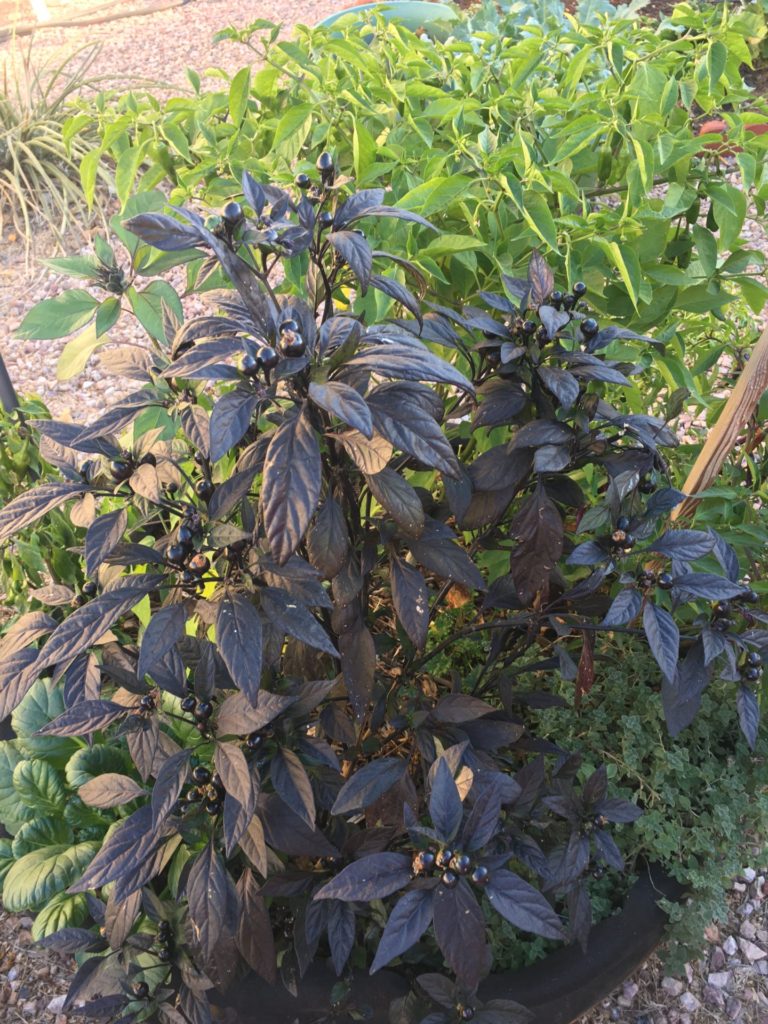
HOW TO GROW
- Plan on 7-14 days for germination. Hot pepper seeds can be more difficult to germinate. In nature pepper seed are often “treated” before they are planted. The seeds are likely to pass through the digestive system of birds where any germination inhibiting coatings are removed.
- While they can be direct sown once the soil is about 65 degrees, (peppers like a very warm soil for germination), most gardeners start them indoors under grow lights.
- Hot peppers can be treated with heat or acid to encourage germination. Soak the seeds in water that is 80- 82 degrees hot. Seeds that do not sink to the bottom are not viable. Allow to cool, leaving the seeds to sit overnight before planting. They can be scarified in a weak acid such as vinegar, orange juice, coffee, and hydrogen peroxide.
- Plant them twice as deep as the seed size.
- For spring planting, (transplanting into the garden), start seeds indoors as early as November or December as they grow slower in the cooler months. For monsoon, planting, start them in June or July to plant out the end of July or August.
- A seed germination mat is essential to starting pepper seeds in the cooler months. It helps maintain a soil temperature that is conducive to germination. If they are being started in the warmer season to transplant out for monsoon planting, a heating mat is not required.
- If they are direct-sown, using a bit of burlap or cheesecloth to shade the seed/seedling. This will also keep birds from eating or pulling up the seedlings.
- Check soil moisture frequently, do not allow the soil to go completely dry.
- Peppers like heat, but not the extreme sun. They will grow best with some sun protection. Often if planted in full sun, the fruit will be scorched during the hottest part of summer. Shade cloth helps prevent this.
Feed with an organic higher phosphorus percentage fertilizer. We recommend Earth’s Original Organics Magic Flower.
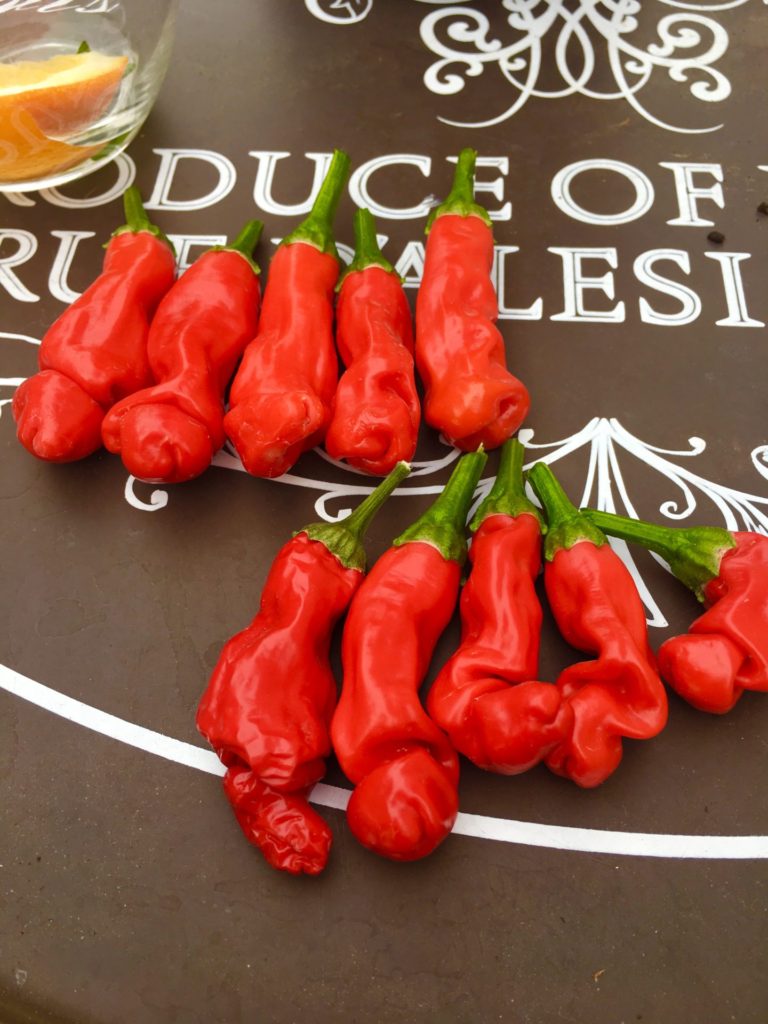
Possible Issues
- No/low germination. This could be due to seed variety, or seed quality, however, this is common in chile seeds. Allow 7-21 days to germinate. Provide warm soils and keep the seeds evenly moist. Use the scarification methods listed above, before sowing.
- Aphids: In early spring chile plants can be prone to some aphid issues. Manage aphids by observing. Attracting beneficial bugs and lastly resorting to other measures. Read here for more info.
- Whiteflies: Fall often brings whitefly infestations. This annoying pest can be managed by daily sprays of water on the underside of leaves to knock off eggs. Yellow sticky traps are another option and having plants that invite predatory bugs to the garden. For more details on our approach to managing pests read here.
- Spider mites: Spider mites show up as it becomes really dry and hot. The best approach is one of prevention. As temperatures start to rise spray off plants with water at least one a week. This breaks the dryness cycle and knocks of any mites that may just be starting to infect plants.
- Scorched fruit: Once temperatures are above 95 degrees consistently, fruit that are not shaded by leaves can become scorched. To prevent this, use shade cloth or photography umbrellas to provide some shade.
Harvesting
In milder winters, chili plants will overwinter and perennialize. This also means that there will be two crops per year. Heat and flavor levels are definitely affected by water and temperatures which means that the summer harvest can vary from the winter harvested chilies. The intense heat can cause bitterness in the summer harvest. The heat can also cause them to be very hot or quite mild. This has been personally noted in both Sugar Rush Peach and Goat Horn peppers. Summer production was very mild, but winter harvested chilies had much more heat and flavor. Bitterness has also been observed in sweet peppers when temperatures are very high. Most chilies are the most flavorful when they are ripe. However several are also delicious picked green such as jalapenos, serranos, and Hatch types.
Propagation and Saving Seeds
Peppers have true flowers meaning that each flower contains both male and female reproductive parts. Insects are not necessary for pollination. However, they can easily cross-pollinate with other pepper plants, because they are visited by so many pollinators. In a small garden setting, use tulle bags to cover flower buds before they open and reduce the number of pollinators that visit the flowers. (Ants may still be able to get in). Once the flowers open, give the plant a little shake everyday so the the pollen os moved from the male anthers onto the female stigma. The pollinated fruit should be left on the plant until red and it starts to dry to obtain good viable seed. Once the pepper starts to dry, it can be left to dry out completely on the plant or picked and dried indoors. The seeds can be removed, ensure they are completely dried before labeling and storing.

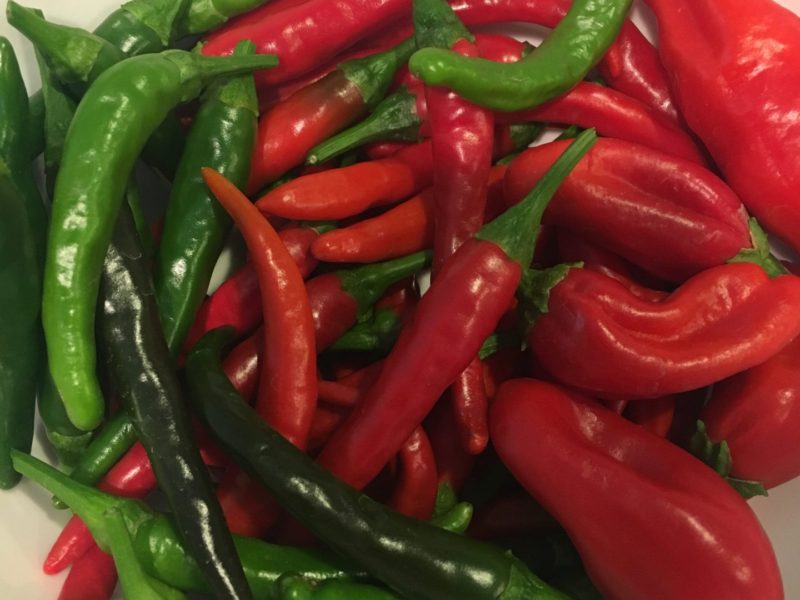
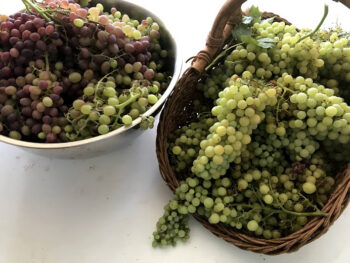
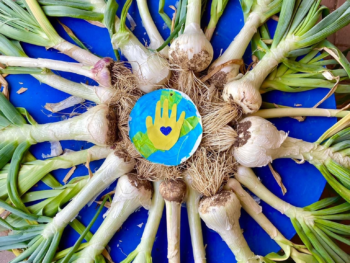
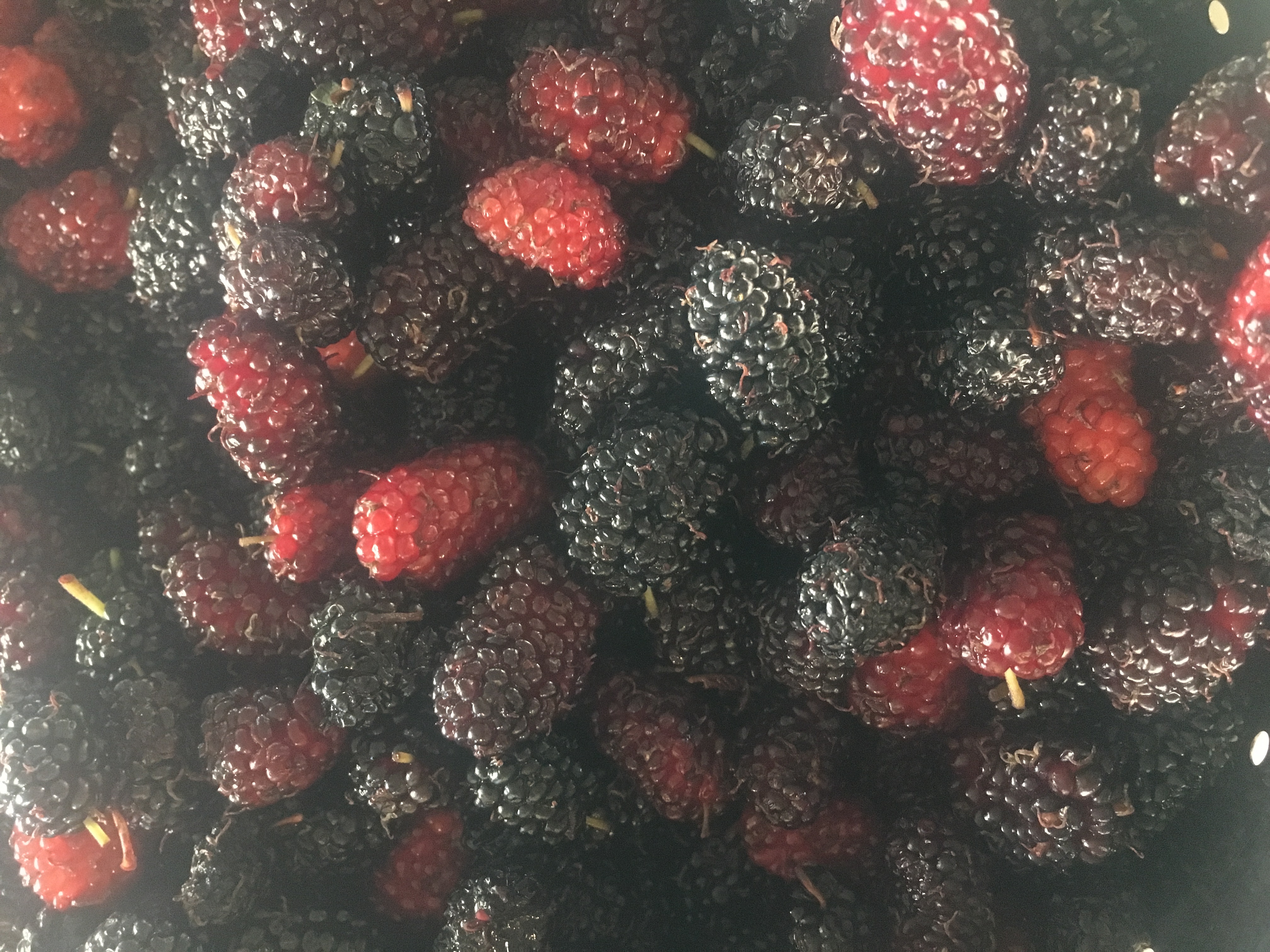
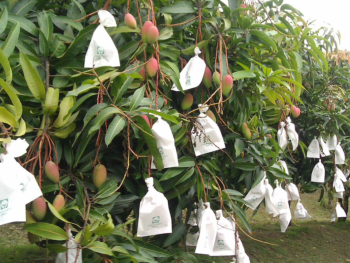
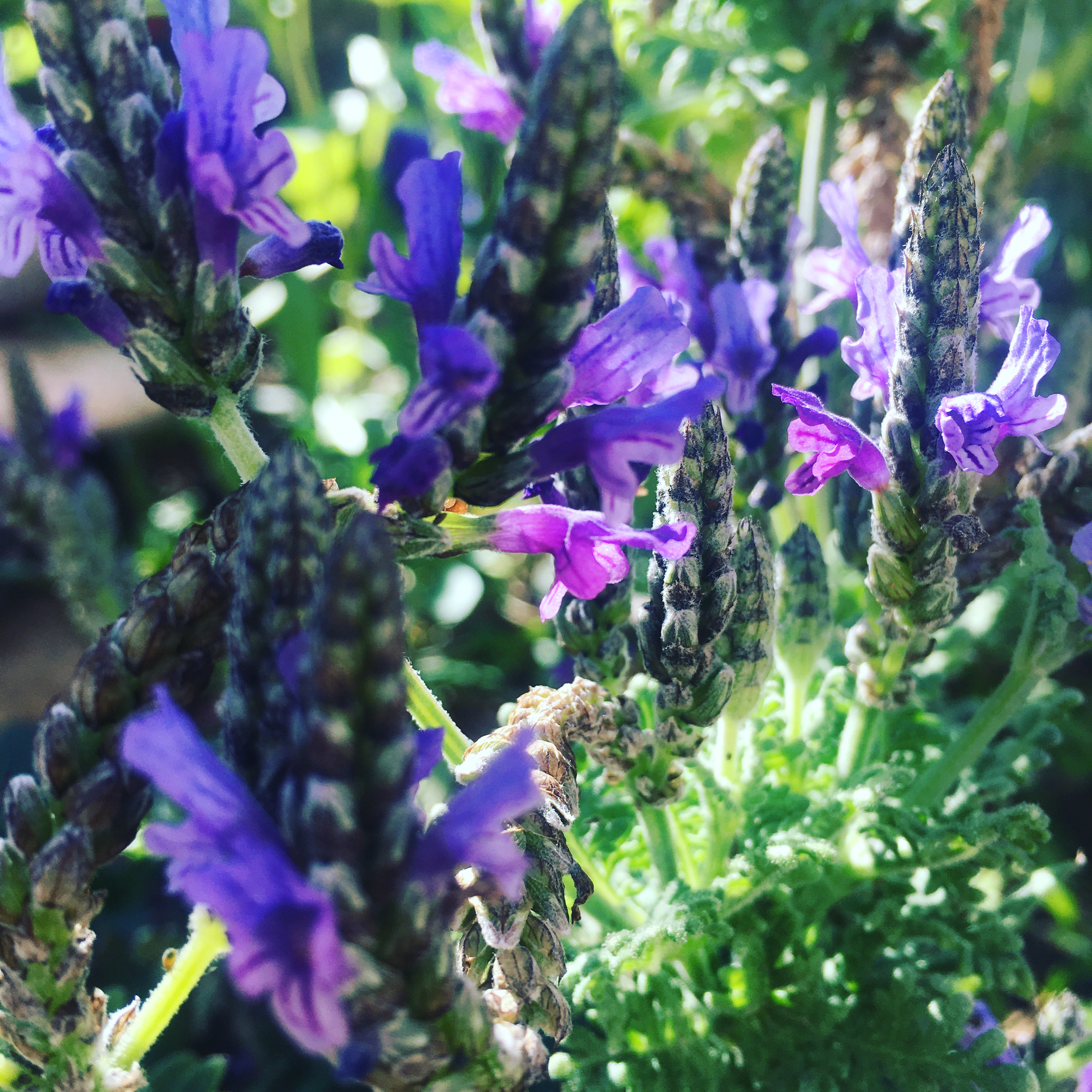
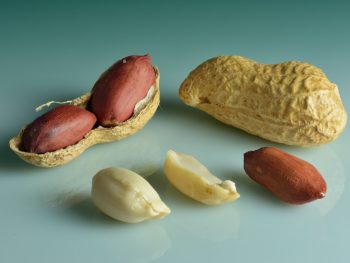
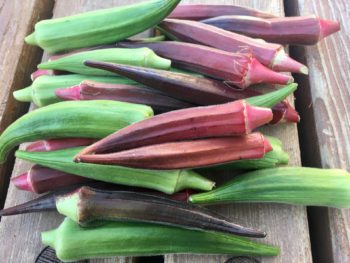
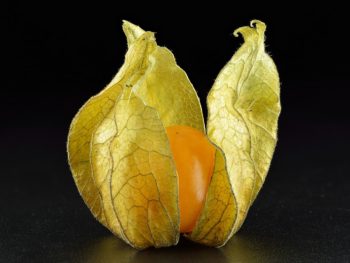
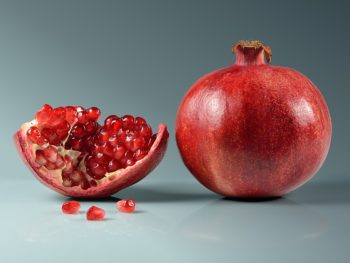
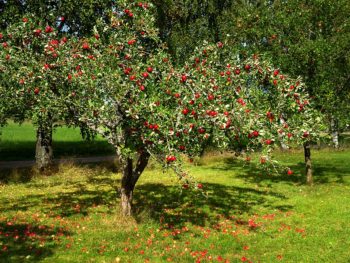
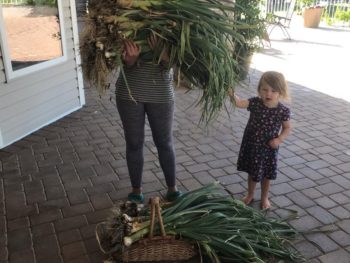
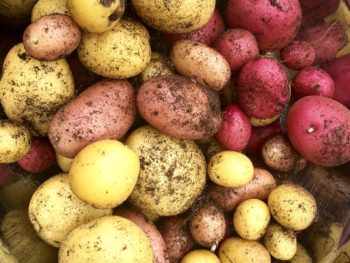
 Eat The Flowers!
Eat The Flowers!